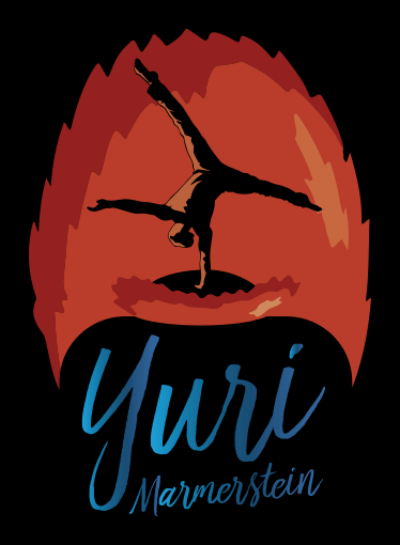Today I want to talk about a very common handstand “mistake” that I notice all the time in adults. That would be the mini-planche.
To the uninitiated, a planche is a gymnastics pose that is in its essence a horizontal handstand and is accomplished by leaning the shoulders really far forward past the hands. The balance component of this posture is quite easy because the center of mass is low and the weight is spread out far from the point of balance. However, this pose takes tremendous upper body strength to be able to hold.
Shoulders past the hands to counterbalance the legs.
Even further lean with legs together.
Why is this important? Well when learning to balance their handstands, a lot of adults will unknowingly and instinctively lean their shoulders a bit forward, as if towards the planche. I can understand completely why people do this: they sacrifice balance for strength. The straight, vertical handstand takes the most skill and precision to balance. Taking the weight out of the center line lowers the center of mass and creates a small counter-balance, meaning the balancing movements with the hands and wrists don’t have to be as precise.
Mini Planche in a handstand can be a very subtle thing to spot sometimes. Notice the angle of the arms in this photo in relation to the vertical line. In most cases it will be more obvious than this to spot.
Compare it to this photo where the arms are completely vertical as they should be.
Advantages of mini planche? Easier balance. Decreased likelyhood of an uncontrolled fall.
Drawbacks? Leaning forward puts more stress on the shoulders and wrists compared to keeping the arms vertical. It may not seem like much, but can accumulate over time, especially if training at a higher volume.
At the start of this article, I wrote mistake in quotes because it’s all about perspective. Though I don’t personally teach it this way, applying this technique can help a beginner to build the sensation of balancing on their hands faster. However, once we get to a more advanced level, finding a resting position in a handstand becomes more important. It is very difficult to be able to rest and relax in a handstand if the arms are not vertically aligned. The habit of planching will make it more difficult to increase endurance and work capacity, as well as learning skills like press to handstand. It will especially make one arm handstand more frustrating, as slight forward shoulder lean is a major cause of body rotation in one arm shifts.
I generally recommend learning to balance with the arms vertical from the beginning. Over the long term it’s better for your body and skill progressions though it may take a bit longer to initially learn to balance.
How do we fix the mini-planche? It’s all about perspective. I generally find that most people who end up building this habit are not aware of it. In other words, they think they are vertical when they are in fact leaning their shoulders forward. This means that if you were to place them in a vertical position, they would feel like they are falling towards the heels of their hands.
The best way to get rid of this habit is to develop control and awareness in a variety of positions of the shoulders in relation to the hands. By developing opposite extremes, it will be easier to find a resting position in middle ground.
We are looking to understand 3 position: shoulders above the hands, shoulders in front of the hands, and shoulders behind the hands. Once you learn what all of these feel like, it becomes much easier to give yourself feedback and make the proper corrections.
Vertical becomes a middle ground as opposed to an extreme range of control.
Check out this video to see what I mean:
Of course this exercise is quite advanced and can be scaled bu using a spotter, or working the forward and back elements separately against the wall before combining them.
Check out my youtube video below to see some more basic versions of how to fix the mini-planche. You can skip to 6:35 for the practical solutions, before that is theory.
Still working your handstand balance? Check out my ebook so you can develop a deeper understanding of the process.




